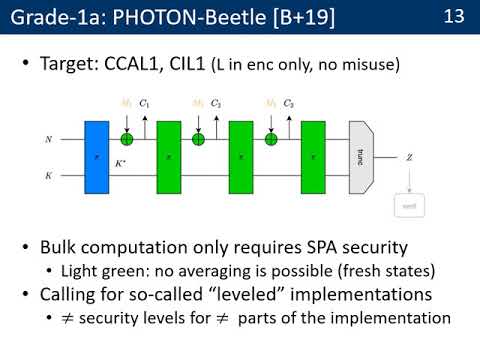Welcome to the resource topic for 2020/211
Title:
Mode-Level vs. Implementation-Level Physical Security in Symmetric Cryptography: A Practical Guide Through the Leakage-Resistance Jungle
Authors: Davide Bellizia, Olivier Bronchain, Gaëtan Cassiers, Vincent Grosso, Chun Guo, Charles Momin, Olivier Pereira, Thomas Peters, François-Xavier Standaert
Abstract:Triggered by the increasing deployment of embedded cryptographic devices (e.g., for the IoT), the design of authentication, encryption and authenticated encryption schemes enabling improved security against side-channel attacks has become an important research direction. Over the last decade, a number of modes of operation have been proposed and analyzed under different abstractions. In this paper, we investigate the practical consequences of these findings. For this purpose, we first translate the physical assumptions of leakage-resistance proofs into minimum security requirements for implementers. Thanks to this (heuristic) translation, we observe that (i) security against physical attacks can be viewed as a tradeoff between mode-level and implementation-level protection mechanisms, and (ii) security requirements to guarantee confidentiality and integrity in front of leakage can be concretely different for the different parts of an implementation. We illustrate the first point by analyzing several modes of operation with gradually increased leakage-resistance. We illustrate the second point by exhibiting leveled implementations, where different parts of the investigated schemes have different security requirements against leakage, leading to performance improvements when high physical security is needed. We finally initiate a comparative discussion of the different solutions to instantiate the components of a leakage-resistant authenticated encryption scheme.
ePrint: https://eprint.iacr.org/2020/211
Talk: https://www.youtube.com/watch?v=elJEp4GPIDA
See all topics related to this paper.
Feel free to post resources that are related to this paper below.
Example resources include: implementations, explanation materials, talks, slides, links to previous discussions on other websites.
For more information, see the rules for Resource Topics .
